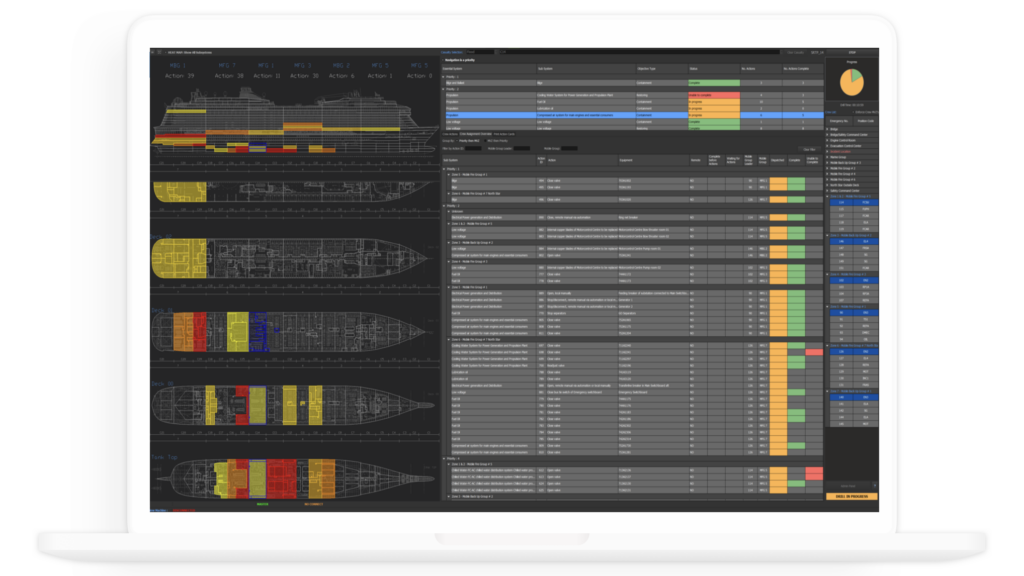Operational Safe Return to Port
The Safe Return to Port (SRTP) regulations have been in effect since July 2010. Reaffirmed by the Bahamas Maritime Authority in its October 2018 bulletin (Bulletin No. 179) and January 2020 marine notice (Marine Notice 03), these regulations place responsibility on operators to demonstrate ongoing compliance throughout a vessel’s lifetime.
Operators must prove the crew’s ability to respond effectively to SRTP casualties and restore critical system functionality within the specified timeframes:
- One hour for propulsion and manoeuvring systems.
- Two hours for systems supporting safe areas.
The Challenge
The operational impact of SRTP regulations on passenger vessels is significant. Crews must know precisely which actions to take for every possible SRTP casualty to restore system functionality. For large, complex vessels, this can involve managing hundreds of potential casualties, each with hundreds of actions required across the whole vessel.
Relying purely on shipyard-delivered SRTP documentation can prove impractical. These documents are written for Class approval, not for operational use. This creates challenges such as:
- Identifying the appropriate casualty and understanding its associated actions, dependencies, and priorities.
- Managing the logistical complexities of coordinating large response teams.
- Tracking overall response progress and transferring lessons learned to improve future drills and operations.
The Solution: SRtP Onboard™
SRtP Onboard™ is a powerful software solution that simplifies SRTP compliance and operational readiness. It supports officers and crew by:
- Providing detailed, relevant information for each casualty.
- Assigning actions to mobile response teams and tracking progress in real-time.
- Delivering action cards via WiFi-connected tablets or in paper form, guiding crews through their tasks step by step.
Built for continuous improvement, SRtP Onboard™ allows data to be updated after each drill, ensuring lessons learned are retained for future scenarios. Detailed post-drill reports provide actionable insights, helping crews refine their response processes while offering clear evidence of compliance the appropriate authority.
The Software
SRtP Onboard™ provides a proven and complete SOLAS SRTP compliance solution to support the operational requirements and to provide continuous evidence of compliance to Flag. It is fully compliant with IMO and the Bahamas Maritime Authority’s Marine Notice 03.
Designed for vessels of any size, SRtP Onboard™ empowers operators to ensure their crew is prepared, efficient, and compliant, protecting lives at sea and meeting SRTP requirements with confidence.
Contact us today to learn how SRtP Onboard™ can transform your compliance and operational processes.
